Great Sand Dunes, you surprised us!
A sublime blend of the finest landscapes, that’s probably the best way to describe the beauty of Great Sand Dunes National Park. You’ll find much more than you might think at first sight. Hike through ancient forests, enjoy beautiful alpine scenery, spot wildlife in the vast grass and wetlands, … But above all, Great Sand Dunes NP is home to North America’s highest sand dunes. Let’s be honest, the typical expansive dune field at the foot of the majestic Sangre de Cristo mountain range just demands to be discovered, isn’t it?!
The best way to do so is undoubtedly through an overnight trip to the dunes. This way you’ll be really astounded by the vastness and beauty of this magical landscape. In addition, you’ll be able to fully enjoy the photogenic golden hours, the hour before sunset and the hour after sunrise. The dunes transform into gorgeous gold-colored waves, with the rugged peaks of the Sangre de Cristo Mountains contrasting in the background. It’s really unique to have such a mysterious landscape to yourself.
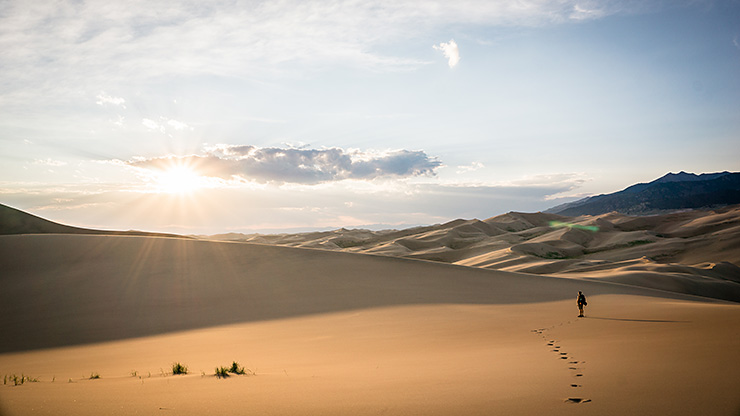
Located in southern Colorado, Great Sand Dunes National Park is easily combined with a visit to eg. Rocky Mountain National Park, Aspen, Colorado Springs and Durango. It is therefore surprising that the park is so quiet, even in high season!
When to go?
Camping in the dunes is possible year-round. However, you should always check the weather forecast before leaving. Thunderstorms and high winds can turn this unique experience into a true nightmare. Let’s avoid that!
Also pack your clothing according to the expected temperatures. Even though the setting looks like a hot desert, you’ll be at high altitude (8,200 ft and above). At night temperatures can drop quite low. Even in autumn and spring, freezing temperatures are not unusual.
In the summer, thunderstorms are common but usually occur only in the afternoon. Therefore, avoid being in the dunes that period of the day as lightning strikes are also common. In the late afternoon, it usually clears up again. That’s the perfect moment to start your adventure! You immediately avoid the hot afternoon sun too.
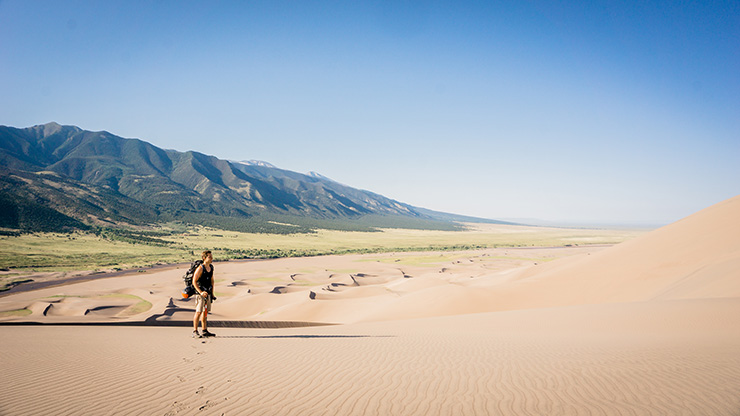
Late spring, the end of May to early June, is considered to be the best travel time. Not only because of the pleasant temperatures, but especially as the Medona Creek reaches its peak flow. This adds just that little extra to the scenery! Spring is also known as the windy season. So even in spring, please check the weather forecast!
Backcountry permit
A backcountry permit is required to camp in the dune field, but is free and non-reservable. Permits are first-come, first-served and must be obtained from the Visitor Center the day of departure, during office hours. There is a limit per night of 20 parties of up to 6 people per party, but this is usually not achieved during the week. However, if you plan this trip in a busy summer (holiday) weekend or in a weekend late May – early June (when the Medona Creek reaches its peak flow), it’s advisable to visit the Visitor Center as early as possible.
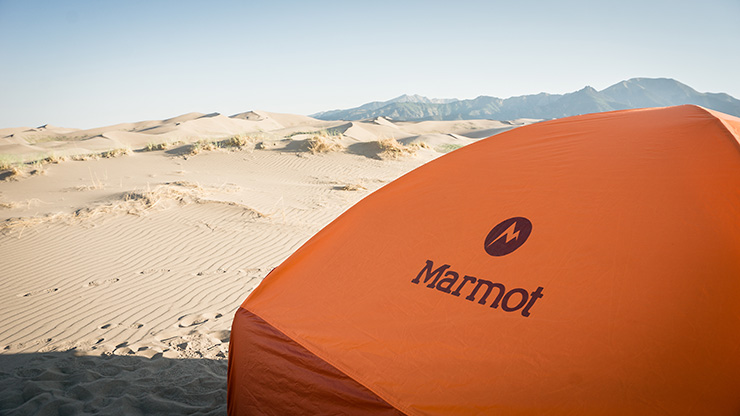
This permit doesn’t include the entrance to the national park. If you don’t have an Annual Pass, it will cost you $15 per car to enter the park.
How to get there
The journey to the dunes starts at the Amphitheater, where you immediately find the overnight parking lot. Coming from the Visitor Center, the Amphitheater parking lot is located just before Piñon Flats Campground on the right side of the road. The two-day backpacking trip starts across the road – on the side of the dunes, of course!
Trailhead GPS Info:
| Latitude: | 37°44’37.7″N (37.743804) |
| Longitude: | 105°30’24.1″W (-105.506697) |
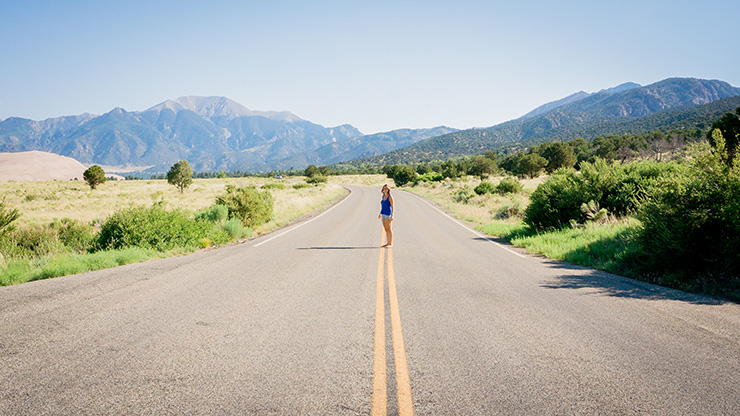
The trip
A short trail takes you over the Medano Creek to the dune field. From there, there is no fixed trail anymore. Choose your own route! The only restriction is that you pitch your tent outside of the day use area. This requires a minimum hike of 1.5 mile, beyond the first high ridge of dunes. This seems quite short, but be sure: it’s long enough! The steep slopes combined with the deep sand turns the climb into a real work-out. At some places, you literally sink into the sand up to your mid-calves. Take enough water with you, you’ll need it!
Be warned: the wind and especially the sand really challenge you to set up your tent. Unless you have extra-long versions for sandy soils, your stakes are quite useless. Instead, take enough plastic bags with you. You can transform them into useful sandbags. It looks a little strange, but it works effectively! Once you’re settled, you can explore the wonderful scenery and look forward to the colorful spectacle of the evening and morning sun. It’s breathtaking!
We would like to share this experience with you through some pictures:
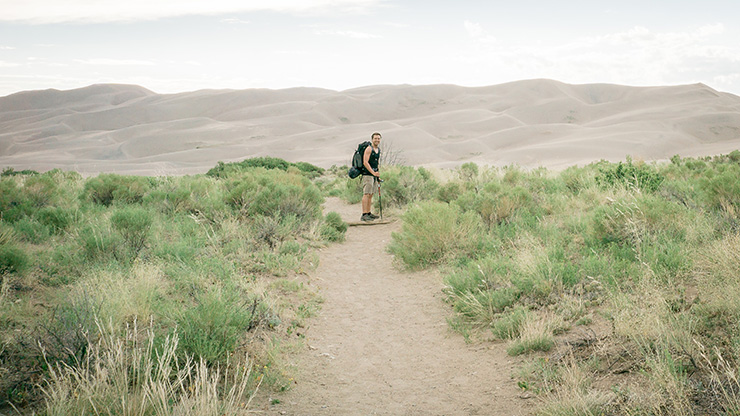
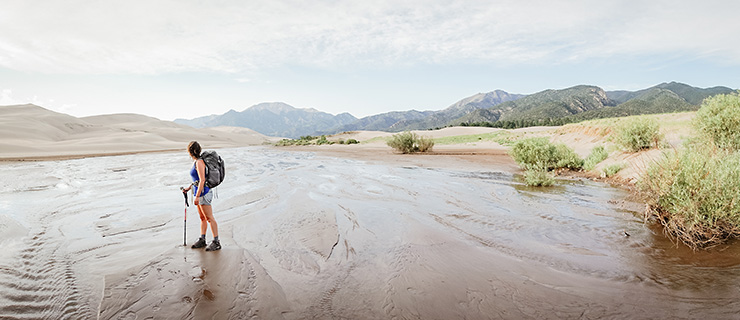
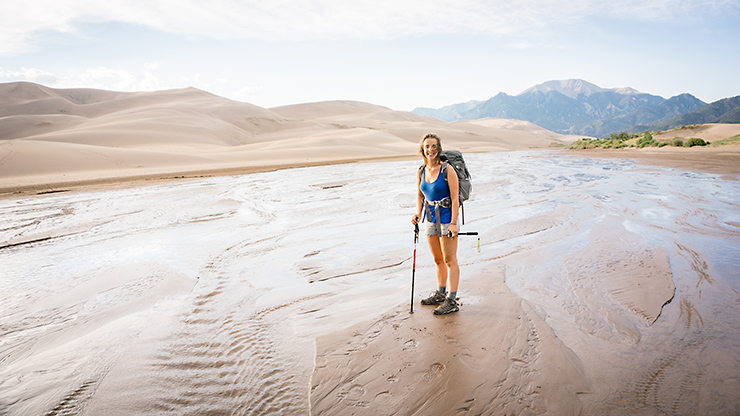
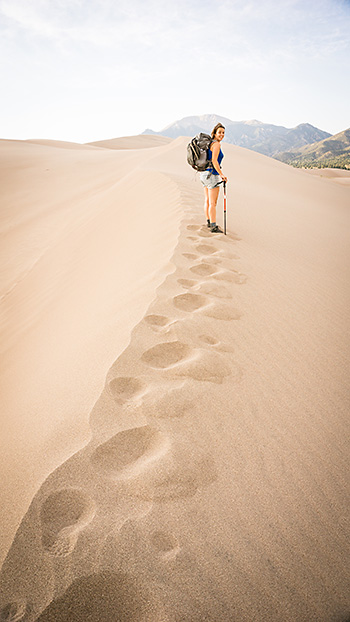
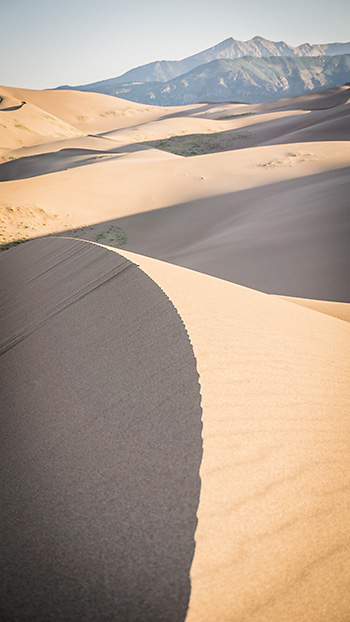
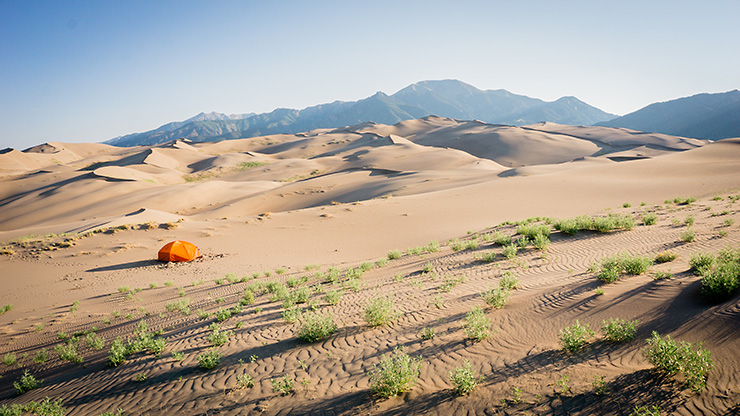
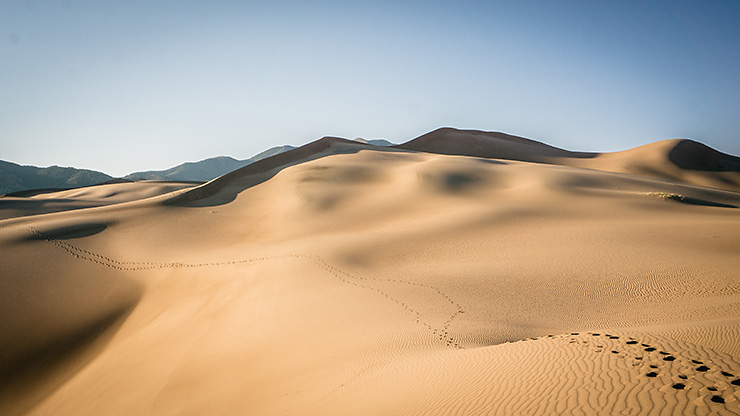
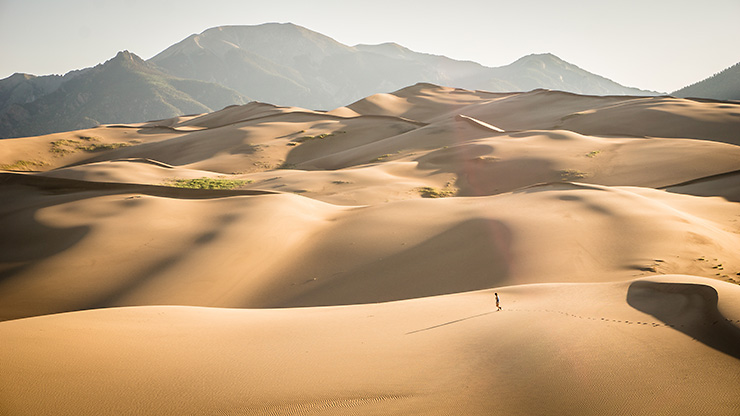
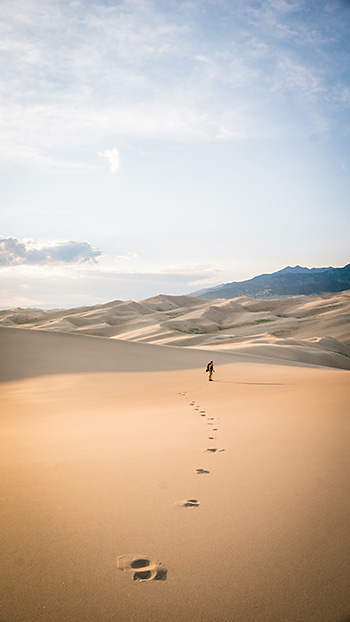
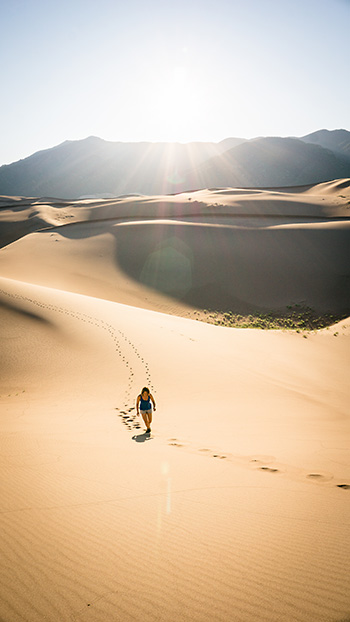
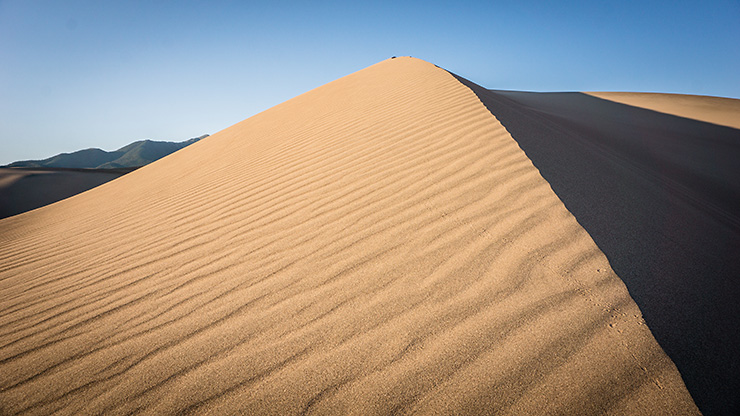
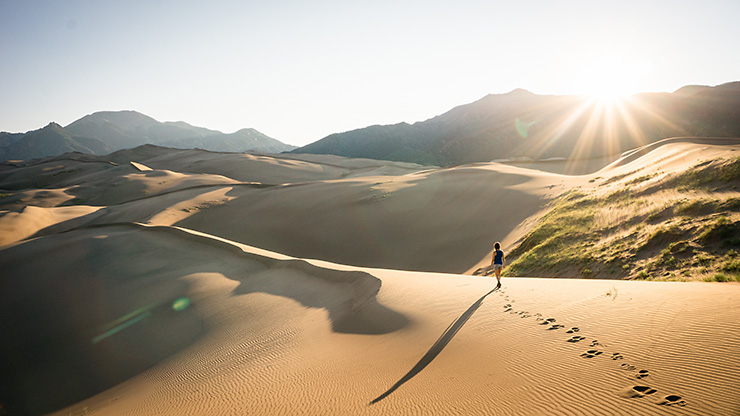
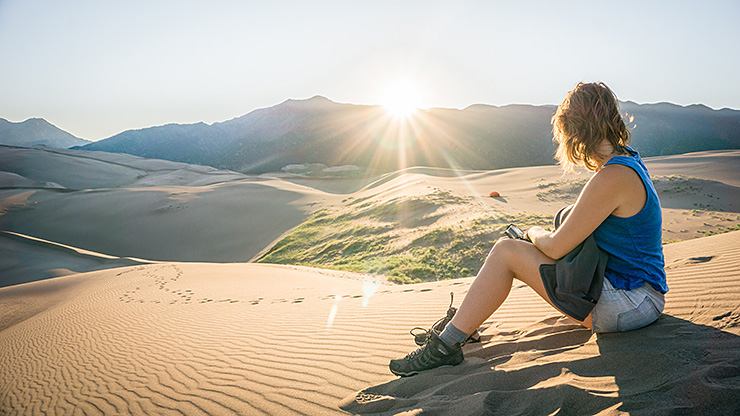
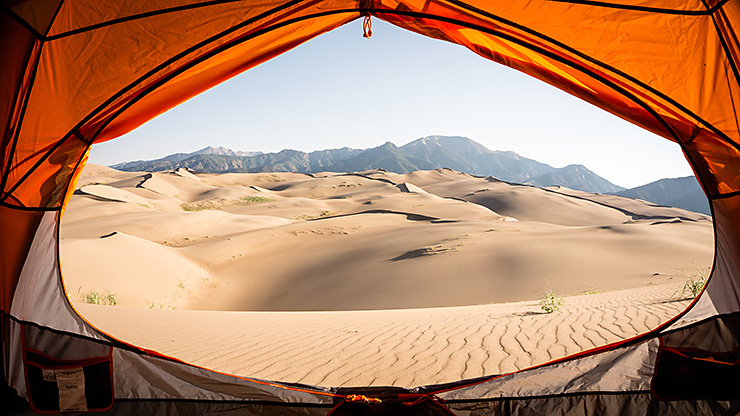
What’s your most memorable camping experience? Please share!
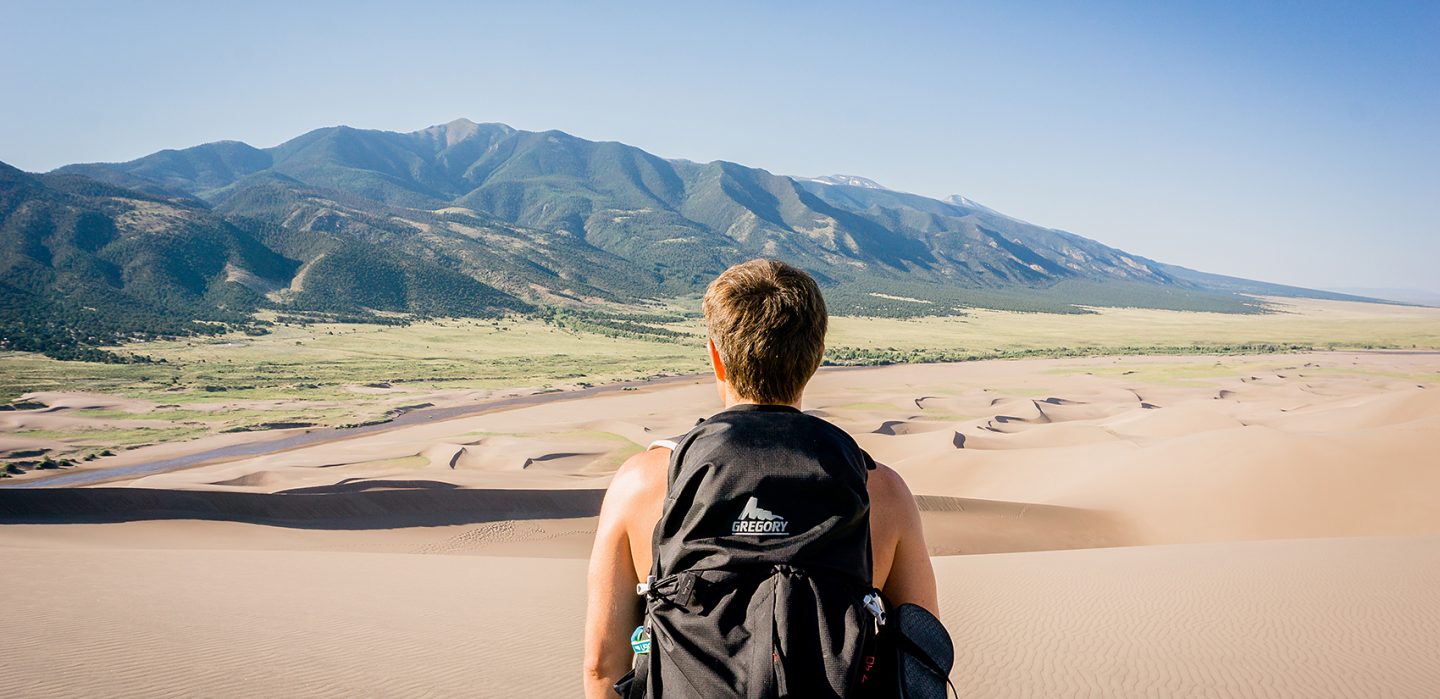
Leave a Reply